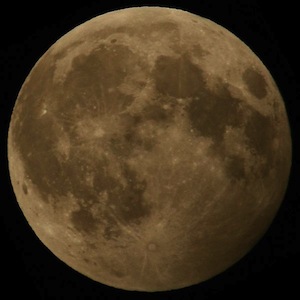What Is A Lunar Eclipse? Full Moon Observed Around The World
A lunar eclipse occurred on Friday when the full moon slid into earth’s shadow and was witnessed by people in Africa, Europe, Asia and North and South America.
The penumbral lunar eclipse saw the moon slip partially into earth’s shadow for roughly four hours. Over 75% of the moon was covered by the planet’s shadow at its peak around 7:50 p.m. EDT, according to Space.com. While the eclipse could be witnessed in just about all of of Europe and Africa, only those in Western Asia and the Eastern parts of the America’s were able to view the phenomena.
Those who fell outside the viewing regions for the eclipse could have watched it online via the Slooh Space Camera. The broadcast ran from the eclipse’s beginning at 2:45 p.m. and through its end. Experts joined the broadcast to comment on the lunar happenings during the peak at roughly 7:30 pm.
Though the penumbral eclipse is less awe-inspiring than total and partial eclipses, it does create a reddish tint on the otherwise bright white full moon. It’s caused when the moon passes through Earth’s outer shadow – the penumbra. In a partial eclipse the Earth's umbral (inner) shadow partially blocks the moon; in a total eclipse the Earth’s umbral shadow completes blocks the moon.
– Chelsea Regan
Get Uinterview's FREE iPhone App For Daily News Updates here.
Get the FREE Uinterview iPad app here and watch our videos anywhere.
RELATED ARTICLES
Get the most-revealing celebrity conversations with the uInterview podcast!






Leave a comment